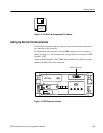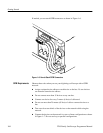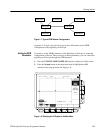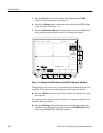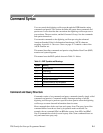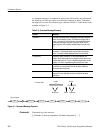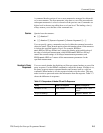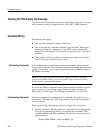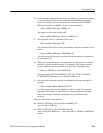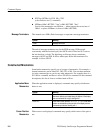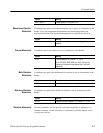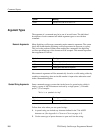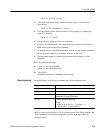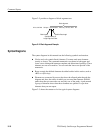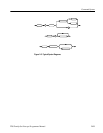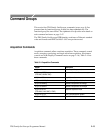
Command Syntax
TDS Family Oscilloscope Programmer Manual
2–5
2. If concatenated commands have headers that differ by only the last mnemon-
ic, you can abbreviate the second command and eliminate the beginning
colon. For example, you can concatenate the commands ACQuire:MODe
ENVelope and ACQuire:NUMAVg 10 into a single command:
ACQuire:MODe ENVelope; NUMAVg 10
The longer version works equally well:
ACQuire:MODe ENVelope;:ACQuire:NUMAVg 10
3. Never precede a star (*) command with a colon:
ACQuire:MODe ENVelope;*TRG
Any commands that follow will be processed as if the star command was not
there so
ACQuire:MODe ENVelope;*TRG;NUMAVg 10
will set the acquisition mode to envelope and set the number of acquisitions
for averaging to 10.
4. When you concatenate queries, the responses to all the queries are concate-
nated into a single response message. For example, if the display intensity
for text is 80% and for the waveform it is 90%, the concatenated query
DISplay:INTENsity:TEXt?;WAVEform?
will return either :DISPLAY:INTENSITY:TEXT 80;:DISPLAY:INTENSIĆ
TY:WAVEFORM 90 if header is on or 80;90 if header is off.
5. Set commands and queries may be concatenated in the same message. For
example,
ACQuire:MODe NORMal;NUMAVg?;STATE?
is a valid message that sets the acquisition mode to normal. The message
then queries the number of acquisitions for averaging and the acquisition
state. Concatenated commands and queries are executed in the order
received.
Here are some invalid concatenations:
H DISPlay:INTENsity:TEXt 80;ACQuire:NUMAVg 10
(no colon before ACQuire)
H DISPlay:INTENsity:TEXt 80;:WAVEform 90
(extra colon before WAVEform — could use DISPlay:INTENsity:WAVEform
instead)



